According to The Unbounce Conversion Benchmark Report, the median conversion rate for SaaS businesses in 2021 falls at 3%, with top performers managing to secure rates as high as 20% and over. Of course, not all industries enjoy the same outcomes. As expected, low-risk purchases like apps and devices tend to accomplish better results.
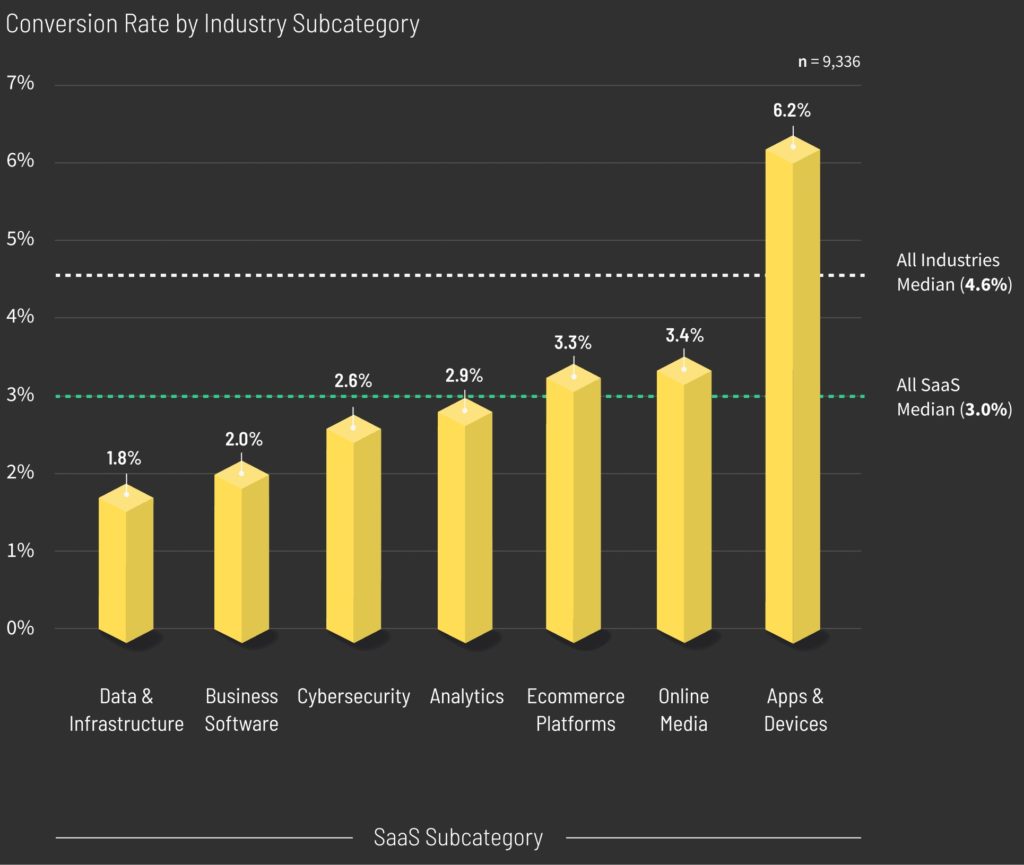
But this statistic naturally leads to the following question: Could the low conversion rates observed by high-value and niche service providers be remedied with an improved approach to sales? Perhaps there’s a way to boost SaaS product page performance by applying a few guaranteed-to-work tricks?
Well, it can be argued that learning how to describe your SaaS product more effectively could result in more conversions and lower churn rates.
So what are the top strategies you should implement on your SaaS product pages? And are there any approaches you should actively avoid?
The following are seven tricks you can implement to describe your products more effectively to website visitors.
Lead with a clear value proposition
Sometimes, the best solution to boosting SaaS website performance is the simplest one. And what’s more simple than finding a clear and to-the-point way to describe what you offer?
You see, the value proposition section on your homepage is the one that houses the most important message you want to communicate with your potential audience. And that means several things:
- It should be visually attractive, catching users’ attention as soon as they land on your website.
- It should provide web visitors with a clear path towards becoming viable leads (most often with compelling CTAs).
- It should make effective use of the available space to convince potential customers that your product provides them with the solutions they need.
So what can you do to tick off the last item on the list?
Well, you can start by finding a way to describe your SaaS product’s benefits in one short sentence. Ensure that this message effectively relates to your target audience, is easy to understand, and points out the features that make your product unique.
See, for example, the Aura homepage. The brand uses the phrase “Maximize Amazon sales” to communicate what its software does and who it’s aimed at (Amazon sellers). Then, it goes into detail by explaining that the program in question is a repricer and analytical solution. Finally, it points out AI and machine learning as its most advanced features, which help users win the Amazon Buy Box.
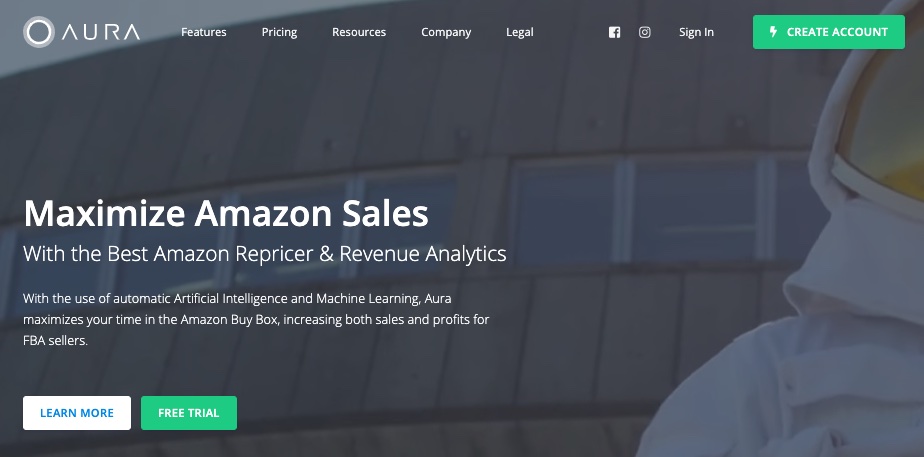
Sell benefits, not functionality
The second most effective way to improve how you present your SaaS products to website visitors is to move away from the standard feature-oriented approach and start thinking from your target audience’s POV instead.
You see, most users don’t care about the technology behind SaaS solutions. The average consumer couldn’t care less about the code used to build a program. They just want it to work. That’s why translating product features into user benefits makes for a top strategy for boosting SaaS website conversions.
To do this, you will first have to understand the problems your potential users face. Go back to your initial business research. Or, if that doesn’t give you the answers, think about an average person deciding to use your software.
In truth, any feature can be presented as a benefit. But, you have to take the time to think about it from the user’s point of view. Frame it as a solution rather than just a gimmick.
So, for example, if you’re selling a checkout SaaS solution like Paddle, you have to know that your clients likely won’t comprehend the processes behind calculating risk scores or automatic payment flagging. But, they will understand the benefit of being protected against fraudulent transactions that could end up losing them money. So, it’s only natural that you should focus your product description on the latter.
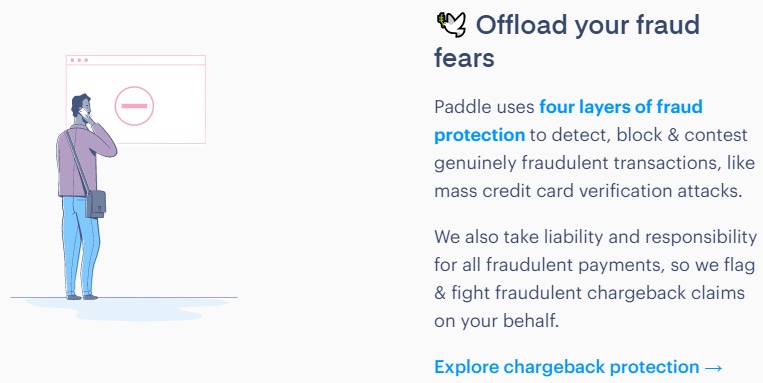
Address meaningful pain points head-on
While we’re on the subject of describing benefits instead of features, it’s not a bad idea to think about possible ways you can effectively convince website visitors to convert. One of those ways is showing that you understand their work process.
Taking the time to make your offer relevant to your target audience is always worth the effort. Especially if you consider the impact that personalization has on consumer behavior. According to the SmarterHQ privacy report, 72% of consumers will only interact with marketing messages relevant to their experience. And while aggressive targeting and personalization tend to harm sales, taking the time to learn about your audience’s pain points does pay off.
For example, if you check out the purchase order software page from inFlow, you’ll see how it describes the various challenges sellers face when handling restocks.
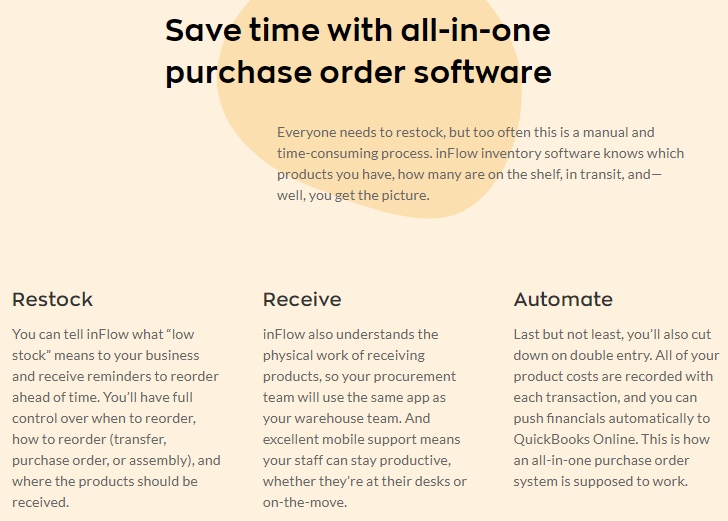
The reason this approach works is that, by listing pain points, the brand shows that it understands its audience’s frustrations. Moreover, by separating each possible consumer need into its own category, InFlow effectively shows off its industry-specific know-how, as well as its commitment to providing the best possible solution for its clients’ needs.
The result is a product page that’s relevant to the consumer experience. But by using the seller’s experience instead of intrusive personalization techniques, it doesn’t come off as too pushy or downright creepy.
Steer clear of jargon
Showing your expertise always makes for a good idea. Particularly since it helps build brand trust. But, if you’re looking for effective ways to describe your SaaS product to your website visitors, you should try to avoid getting too technical in your descriptions.
One of the biggest mistakes SaaS companies make when marketing their products is that they assume that their target audience wants tech specs. But that’s not entirely true.
Take, for example, a SaaS brand like Maze. Sure, it could get all technical about what precise methods it uses to test products. (And it does, in the sections made for tech-savvy users like product designers). But when it comes to explaining its value proposition and user benefits, this brand chooses to stick to more user-friendly terms.
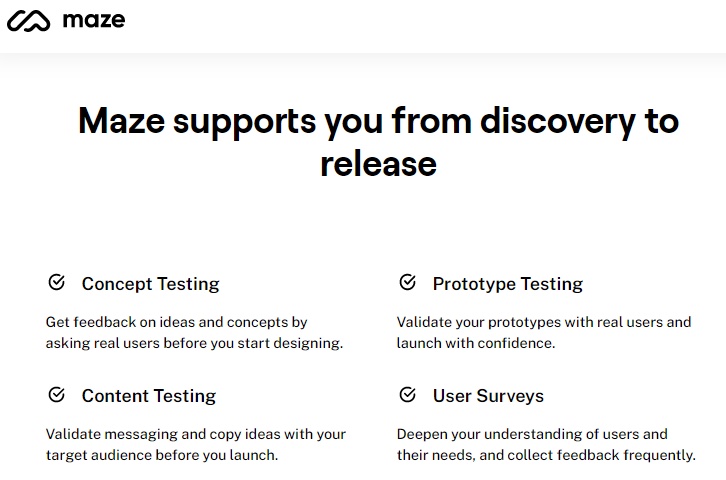
The result? A jargon-free website that offers sufficient information to intrigue potential customers without getting too technical and alienating audiences who are still in the top stages of the sales funnel.
Use video
In 2021, videos make for one of the most popular consumer engagement tools out there. After all, more than half of all landing pages now feature videos. More importantly, web users are becoming increasingly reliant on gathering product information through this type of content.
With this in mind, utilizing videos on SaaS product pages could soon become a standard, and with good reason.
The thing about digital products is that, oftentimes, they’re difficult to explain with words alone. And while visuals and screenshots help, they can be insufficient for more complicated use-cases.
Understanding this obstacle, Ad Badger created a product demo in video format, aiming to take potential customers through all the steps of using its software. And, from the audience’s POV, it’s a solution far superior to monotonous how-to guides or superficial feature overviews. It puts the user experience center stage.
Summary
As a rapidly growing industry, Saas requires more and more cutting-edge marketing solutions for up-and-coming brands to reach their target audiences. In a highly competitive field, it can be difficult to cut through the noise.
But when it comes to product descriptions, it turns out that you don’t need to reinvent the wheel to turn website visitors into customers. In fact, you’ll find that high conversions on SaaS product pages often come from elementary marketing techniques.














































Comments